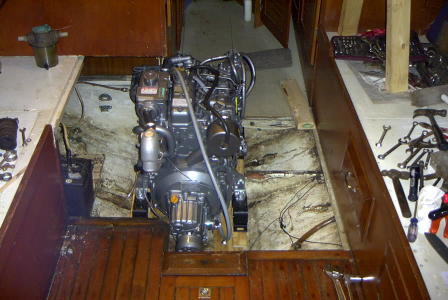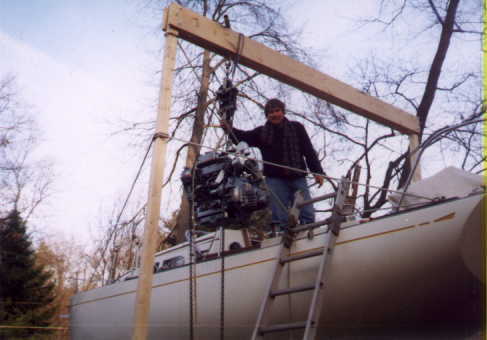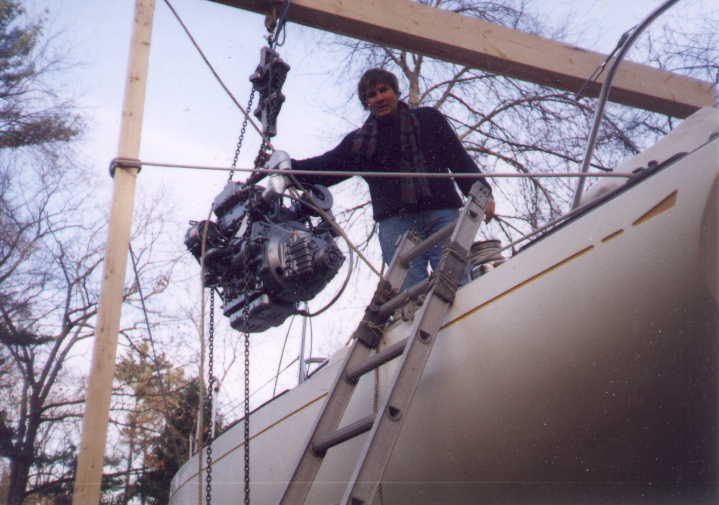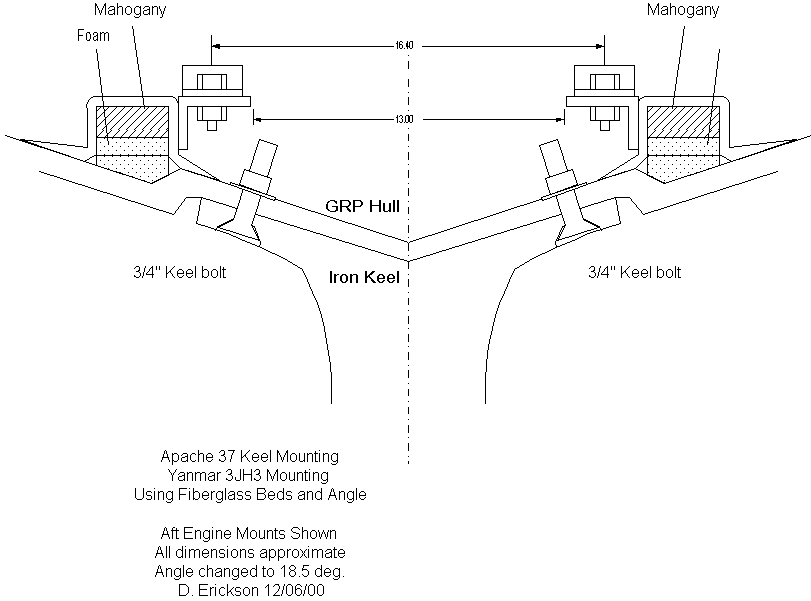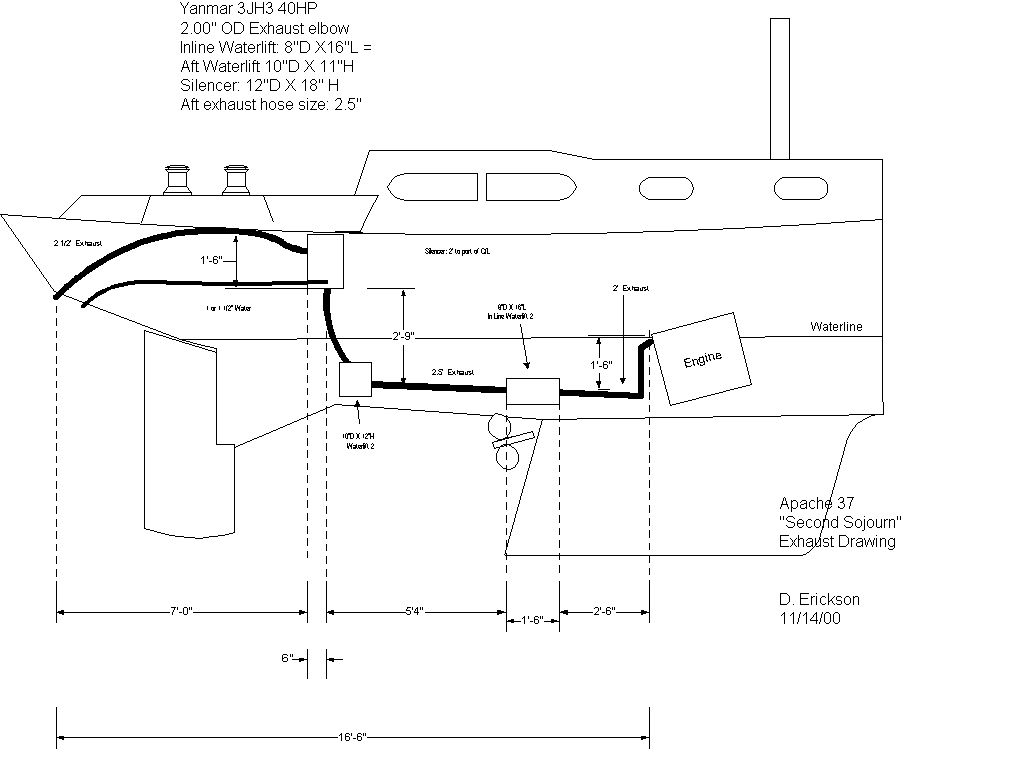- Second Sojourn's Third Engine:
- Make the boat power faster
- Make the engine quieter
- More reliability
- Easier and cheaper to get parts
- Replace the 25 year old exhaust
Yanmar 3JH3 Diesel
The decision to repower was a tough one. We're looking for a more relaibale engine, one that will get us south and back in a few years. Here are the goals:
The Volvo never drove the boat very fast. 25HP should be adequate for a 15,000# boat, but my tendency not to push the antique meant that we rarely motored faster than 4-4.5 knots. Much slower with any headwind. In speaking with other Apache owners, they generally agree that 20-25HP is barely adequate. One doesn't get a chance to repower often, so after considering the 27HP Yanmar 3GH30, I chose the 37HP 3JH3. I did a fit study and found that it would fit fine. It costs about $1000 more, and it comes with a 7degree down angle to allow easier mounting. The boat is set up for a 15 degree shaft tilt which is the maximum tilt specification for the straight 3GH30. I like having the engine mounted flatter.
The other problem is that with the prop located behind the keel the old 14 X 14 LH prop barely clears the hull. The books recommend 10% tip clearance. I have about 3%. The new more powerful engine spinning a larger diameter, lower pitch prop faster with more tip clearance should provide much more power. This requires extending the prop shaft about 6 inches and adding a strut.
As far as noise and vibration, the old dry / jacketed exhaust, hard engine mounts and low tech engine made for a noisy uncomfortable cabin and vibration of the whole boat. Some die-hards can sleep with it running. I headed for the cockpit. The newer, quieter engine with soft engine mounts, a wet exhaust and noiseproofing the engine box should help greatly.
Here's the new Iron Genny temporarily mounted on plywood beds. It's mid January here and too cold for fiberglassing the permanent engine beds. I was nervous that it would fit under the cover, and it looks like it wil be fine. It's a bit tight to starboard so I may not be able to use a full 1" of soundproofing in some areas.
